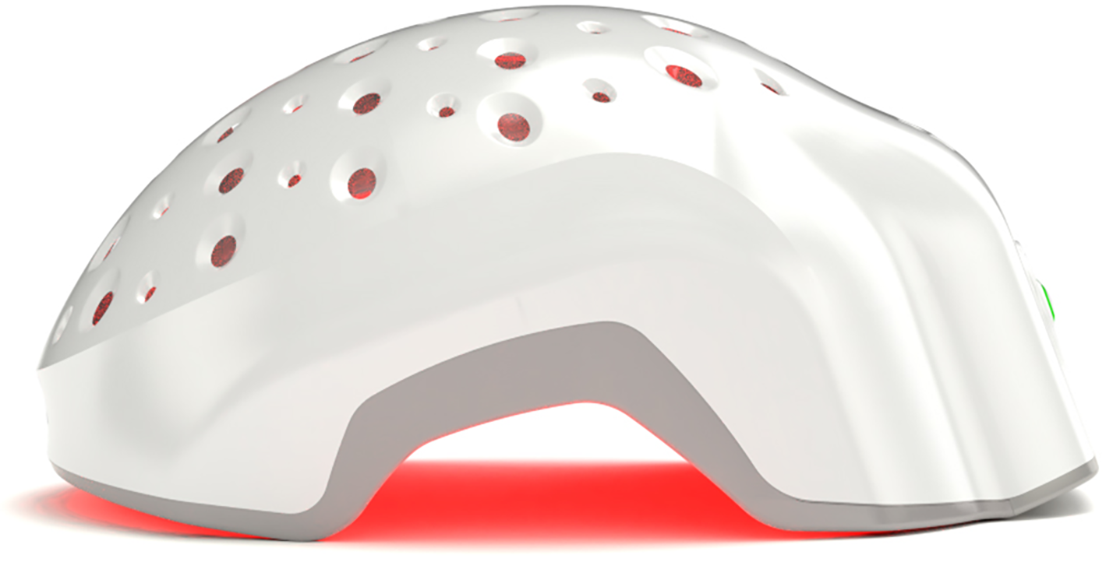Hair loss can be a distressing experience that affects both men and women of all ages. Several causes can trigger hair loss, one of which is hair miniaturization. First, let's learn what hair miniaturization is.
One of the common causes of hair loss, especially in those with a genetic predisposition, is called hair miniaturization.
Hair miniaturization and hair thinning might sound like the same thing, however, they describe the different aspects of hair loss and changes in hair quality. Hair miniaturization refers to the process in which hair follicles become smaller and finer over time. Hair thinning is a broader term that encompasses various factors that can lead to a reduction in hair volume or the density of hair on the scalp.
In this comprehensive article, we are going to explore the causes, signs and various treatment options for hair miniaturization, shedding light on its impact on both men and women.
What causes Hair Miniaturization?
Hair miniaturization is a gradual thinning of hair follicles over time, resulting in thinner, shorter, and less pigmented hair growth. This phenomenon is primarily driven by genetics and hormonal factors. A key player in the process is dihydrotestosterone (DHT).
DHT is a hormone produced as a byproduct of testosterone which binds to hair follicles in individuals genetically predisposed to hair miniaturization. The binding initiates a sequence of events leading to the gradual shrinking of hair follicles. Over time, this results in hair becoming finer and less visible.
Learn more on how DHT causes hair loss.
Signs of Hair Miniaturization: How to Tell
The signs and symptoms of hair miniaturization are often subtle and progressive. So, it is essential to recognize them early. Here are the signs to look out for hair miniaturization:
- Men typically experience a receding hairline, which progresses to balding on the crown, known as male pattern baldness.
- Thinning hair on the crown of the head. A characteristic feature of male pattern baldness.
- Women may notice widening parting as hair becomes less dense.
- Hair miniaturization often leads to more hair fall. You may see many loose hairs in the shower drain, on your pillow, or when you brush your hair.
- Thinning of hair results in reduced volume.
- Miniaturization can decrease hair density. It's a gradual process in which individual hair strands become finer and thinner, resulting in a less dense appearance overall.
Is Hair Follicle Miniaturization the Same in Both Men and Women?

While hair follicle miniaturization affects both men and women, there are differences in their patterns. The individual hair strands become thinner and shorter with hair growth cycle, and eventually, they may stop growing altogether.
Men typically experience receding hairlines and balding on the crown, known as male pattern baldness. In contrast, women often encounter diffuse thinning, affecting the overall hair density. Female pattern hair loss may not always follow a specific pattern, making it challenging to diagnose.
Hair Miniaturization Treatment Options
While complete reversal of hair miniaturization can be challenging, there are several treatment options available to slow down the process and promote hair growth. Some of the hair miniaturization treatment options include:
Topical minoxidil: Topical minoxidil is a treatment option for hair miniaturization. It is a liquid or foam applied directly to the scalp. This OTC medication can help stimulate hair growth and slow down hair loss. Regular application with a sufficient dosage can slow down hair miniaturization and promote healthier-looking hair.
Oral finasteride: Oral finasteride is a pill treatment for hair miniaturization. It works by reducing the levels of a hormone called dihydrotestosterone (DHT), which shrinks hair follicles. By inhibiting DHT, finasteride can help slow down hair loss and potentially promote hair regrowth.
Low-level laser therapy: Low-level laser therapy (LLLT) involves using specialized devices that emit low-energy laser light onto the scalp. This light stimulates hair follicles and promotes hair growth. LLLT is a non-invasive and painless procedure that can be done at home or in a clinic. Regular use of LLLT devices may help improve the thickness and quality of hair affected by miniaturization.
Platelet-rich plasma (PRP) therapy: Platelet-rich plasma (PRP) therapy uses a person's own blood platelets to promote hair growth. The platelets contain growth factors that can stimulate the miniaturized hair follicles. PRP is injected into the scalp areas affected by thinning hair. This treatment may help revive and enlarge the miniaturized follicles, leading to thicker, healthier hair growth.
Hair transplant surgery: Hair transplant surgery involves moving healthy hair follicles from areas with plenty of hair to the balding or thinning areas. These transplanted follicles resist miniaturization and can grow full, thick hairs.
Other Hair Loss Treatment Options
In addition to clinical treatments, there are alternative therapies and lifestyle changes that can support healthy hair growth. These include:
Balanced diet: Nutrient-rich foods can promote hair growth and overall hair health.
Stress management: Reduce stress and adopt relaxation techniques, which can be beneficial in preventing hair loss. If you're a smoker, quit smoking today. Quitting smoking stops stress, which helps to maintain healthy hair growth.
Hair care products: Specialized shampoos, conditioners, and serums formulated to combat hair loss can complement other treatments.
Theradome: A Promising LLLT Treatment

One notable low-level therapy (LLLT) device for hair loss treatment is Theradome. It employs cutting-edge laser technology to stimulate hair follicles, improving hair growth. Theradome offers a non-invasive and convenient approach to address hair miniaturization.
It is designed for home use, allowing users to receive treatment in the comfort of their own space. The efficacy of this helmet is also supported by clinical research, demonstrating its potential to halt hair miniaturization and stimulate hair regrowth.
Say goodbye to thinning hair and hello to confidence. Try Theradome today and unlock the secret to thicker, healthier hair. Don't wait any longer – take the first step toward a fuller head of hair. Click the button below to get started on your journey to hair rejuvenation!






















